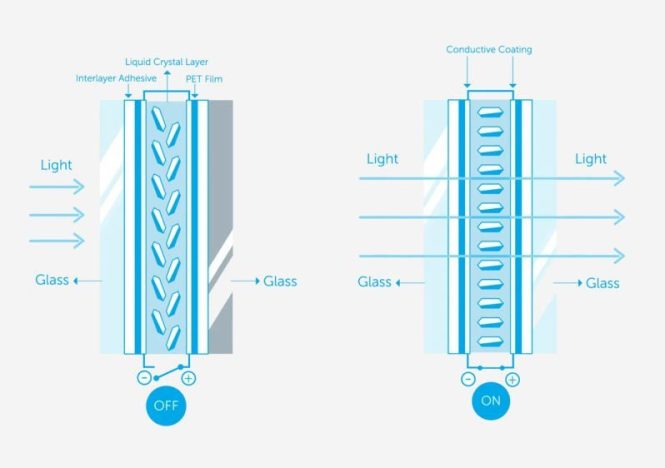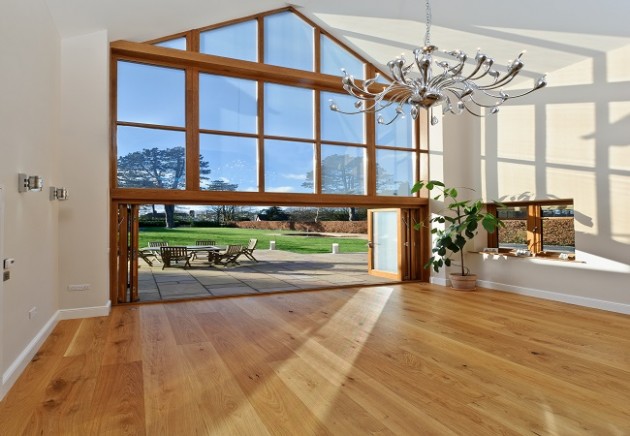

Smart glass technology is rapidly changing the landscape of home design. Imagine a home where you can instantly adjust the amount of natural light flooding your rooms, switch from transparent to opaque glass for complete privacy with a tap of a button, or even integrate your windows with your home automation system for ultimate convenience. This is the reality smart glass offers. Many homeowners, however, are still unaware of the potential of this innovative technology and its ability to seamlessly blend aesthetics with functionality. This article aims to illuminate the impact of smart glass technology on home design, addressing common concerns and highlighting practical applications. We’ll delve into the benefits of smart glass, various types available, installation considerations, and its function in creating a smarter, more energy-efficient home. Let’s explore how smart glass is transforming the way we design and live in our homes.
The benefits of Smart Glass in Home Design
Smart glass technology offers a multitude of benefits for modern home design. Its versatility allows for customization to meet various needs and aesthetic preferences. From maximizing natural light and improving energy efficiency to enhancing privacy and security, the applications are diverse and transformative. The benefits extend beyond the purely functional, adding a layer of sophistication and technological integration to the overall home experience. Smart glass is no longer a futuristic idea; it is a readily available solution with tangible benefits for today’s homeowners.
Enhanced Light Control
The ability to control the amount of natural light entering a space is a key benefit. Smart glass allows for precise adjustment, letting in abundant sunlight during the day while providing shade when needed. This dynamic control reduces glare, maximizes natural lighting for better moods, and even helps regulate indoor temperatures. This intelligent functionality is particularly beneficial in areas with extreme temperature variations.
Improved Privacy on Demand
Privacy is a major concern for many homeowners. Smart glass addresses this by effortlessly transitioning from transparent to opaque states. This allows for complete control over visibility, offering a degree of privacy that traditional window treatments cannot match. The ability to instantly shift from clear to frosted glass offers flexibility and security throughout the day and night, creating a more secure and private living space.
Energy Efficiency and Cost Savings
Smart glass contributes significantly to energy efficiency and cost savings. By intelligently controlling light and heat transmission, it minimizes the need for artificial lighting and reduces energy consumption for climate control. This can outcome in lower utility bills and a smaller carbon footprint, making it a sustainable and environmentally conscious choice for the modern home.
Types of Smart Glass Technology
There are several types of smart glass technology, each offering unique characteristics and functionalities to suit varied needs and design preferences. Understanding the various options available is critical to making informed decisions when incorporating smart glass into your home design project.
Electrochromic Glass
Electrochromic glass is one of the most popular smart glass types. It uses an electric current to adjust its transparency levels. This type of glass offers a smooth transition between transparent and opaque states. Its ease of use and aesthetic appeal make it a favorite amongst homeowners and designers.
Suspended Particle Device (SPD) Smart Glass
SPD smart glass uses microscopic suspended particles within a liquid crystal film to control light transmission. When an electric current is applied, these particles align, making the glass clear. When the current is off, they scatter light, outcomeing in a frosted or opaque state. SPD smart glass is known for its rapid switching speeds and its ability to block a significant amount of solar heat.
Thermochromic Glass
Thermochromic glass responds to temperature changes. It automatically adjusts its transparency based on the surrounding temperature, offering a passive method for regulating light and heat transmission. This type of smart glass doesn’t require electricity, making it an energy-efficient option for many home design applications.
Integrating Smart Glass into Your Home Design
effectively integrating smart glass into a home design requires careful planning and consideration. The process involves working closely with architects, contractors, and smart home technology specialists to ensure seamless installation and optimal functionality.
Design Considerations
Before integrating smart glass, carefully consider where it will be placed. Areas like bathrooms, bedrooms, and living rooms may benefit the most from the technology’s privacy-enhancing capabilities. Think also of the overall aesthetic and how the smart glass will complement the existing design. select colours and finishes that match the overall design scheme.
Installation Process
Installing smart glass may require specialized expertise. The installation process will depend on the type of smart glass and its application. It often involves working with specialized contractors and electricians to ensure proper integration with the home’s electrical system. A well-planned installation process should be seamless and won’t disrupt the flow of other construction or renovation work.
Control Systems and Integration
Smart glass is most effective when it’s integrated with home automation systems. This allows users to control the glass’s transparency settings remotely, through an app, voice commands, or even by integrating them with other smart home devices. This level of control adds a layer of convenience and customization that enhances the home environment.
Smart Glass and the Future of Home Design
Smart glass technology is continuously evolving, with new innovations emerging regularly. The future of home design is likely to see boostd adoption of smart glass, driving further integration with other smart home technologies and fostering more sustainable design practices.
Advancements in Technology
studyers are continuously developing more energy-efficient, self-cleaning, and customizable smart glass options. attributes such as improved transparency control, faster switching speeds, and boostd durability are likely in the near future. These advancements are expected to make smart glass more affordable and accessible, driving its boostd application in home design.
Sustainability and Smart Homes
Smart glass plays a vital function in sustainable home design. Its ability to regulate light and heat significantly reduces energy consumption, promoting environmental friendliness. As the focus on sustainability grows, smart glass will become an even more crucial element in green building design. Combining smart glass with solar panels and other renewable energy sources can transform a home into a truly self-sufficient and eco-friendly space.
Design Trends and Applications
Smart glass is poised to become more integral to the design of homes in the coming years. We might see its application boost in more areas beyond traditional windows. Smart glass partitions, smart glass doors, and even smart glass furniture could become commonplace. The design possibilities are limitless, opening up a world of opportunities for architects and interior designers to create truly innovative and dynamic living spaces.
Case Study: Smart Glass in a Modern Home Renovation
Let’s examine a case study showcasing the achievementful integration of smart glass in a contemporary home renovation project. In this case, a homeowner decided to incorporate smart glass into a living room and bathroom renovation project. The smart glass in the living room allows for the adjustment of natural light, enhancing the ambience and minimizing glare on the large-screen TV. Meanwhile, in the bathroom, the smart glass enhances privacy while allowing natural light to create a brighter and more inviting atmosphere. This showcase is a prime example of how smart glass seamlessly blends technology and functionality with contemporary design aesthetics. The homeowner reported significant improvements in energy efficiency and a marked boost in overall living comfort. The project’s achievement underscores the potential of smart glass to transform the look and functionality of modern homes.
In conclusion, smart glass technology is revolutionizing home design, offering unparalleled control over light, privacy, and energy efficiency. By understanding its impact and exploring its various applications, homeowners can create truly personalized and intelligent living spaces. To stay ahead of the curve, continue studying the latest advancements and consider incorporating smart glass into your next home renovation or new construction project. Don’t hesitate to consult with experts in smart home technology and architectural design to ensure seamless integration and optimal outcomes. Smart glass offers a unique chance to transform your home into a modern marvel; embrace the potential!